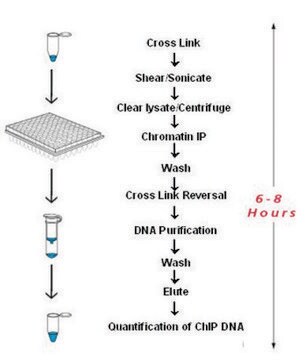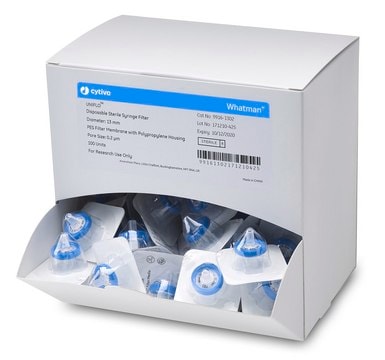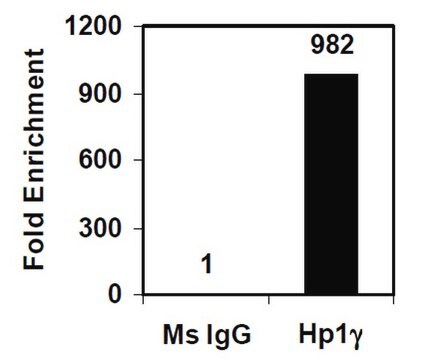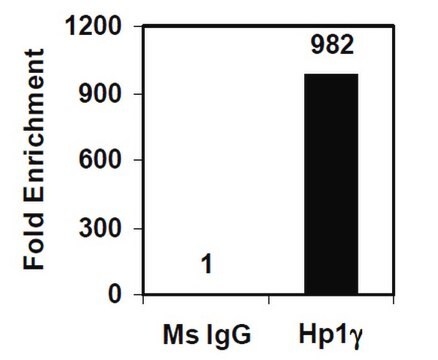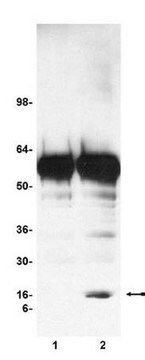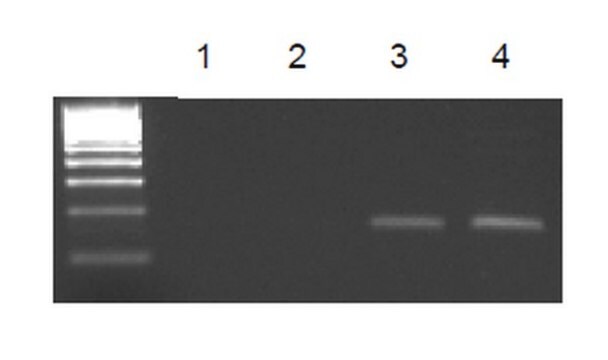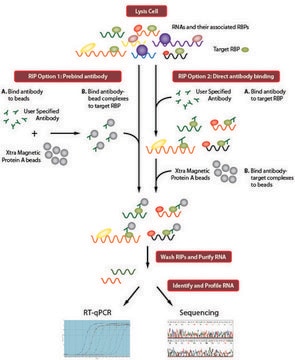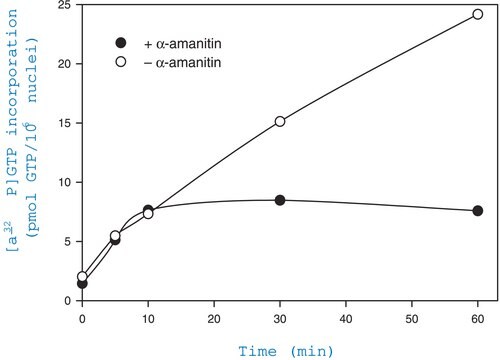CHP2
Imprint® Ultra Chromatin Immunoprecipitation Kit
Complete ChIP kit for sensitivity, compatibility with Next-Gen sequencing
Iniciar sesiónpara Ver la Fijación de precios por contrato y de la organización
About This Item
Código UNSPSC:
12352200
Productos recomendados
Descripción general
The Imprint Ultra Chromatin IP Kit is Sigma′s second generation chromatin immunoprecipitation (ChIP) kit developed for maximum sensitivity and optimum next-generation sequencing results. It provides a complete solution for Chromatin Immunoprecipitation, including columns and reagents for DNA purification. The kit allows researchers to explore the genome-wide binding sites of low abundance transcription factors (TFs), as well as novel histone modifications. It is optimized for ChIP reactions with chromatin from 106 cells (up to ~50 μg DNA), and can also be scaled up (or several preparations pooled) to accommodate 108 cells for genome-wide binding studies in ChIP-chip and ChIP-Seq applications.
Aplicación
- Suitable for downstream applications
- Individual target characterization to genome-wide profiling techniques
- Characterization of signal transduction pathways
- Verification of ChIp-chIP and ChIP-seq data
Características y beneficios
- Use successfully CHiP′ed DNA associated with low abundance, medium, and highly expressed transcription factors, as well as histone modifications
- Greater capacity - can be used over a wide range of cell numbers ranging from 2-10 × 106
- Maximum sensitivity - capable of detecting low abundance transcription factors with as little as 2 × 106 cells
- Employs DNA-Blocked "Staph-Seq" for IP (immunoprecipitation), minimizing contaminating Staph A DNA in downstream ChIP-Seq applications.
Información legal
Imprint is a registered trademark of Merck KGaA, Darmstadt, Germany
Solo componentes del kit
Referencia del producto
Descripción
- Sodium dodecyl sulfate solution, for molecular biology, 10% in 18 megohm water
- Monoclonal Anti-POLR2A antibody produced in mouse, clone 1F17, purified immunoglobulin, buffered aqueous solution
Los componentes del kit también están disponibles por separado
Referencia del producto
Descripción
SDS
- S6576ChIP Next Gen Seq Sepharose™SDS
- I8896IGEPAL® CA-630, for molecular biologySDS
- S5150Sodium chloride solution, 5 M in H2O, BioReagent, for molecular biology, suitable for cell cultureSDS
- W4502Water, Nuclease-Free Water, for Molecular BiologySDS
- I5006IgG from rabbit serum, reagent grade, ≥95% (SDS-PAGE), essentially salt-free, lyophilized powderSDS
- I5381IgG from mouse serum, reagent grade, ≥95% (SDS-PAGE), lyophilized powderSDS
- A7638Bovine Serum Albumin, lyophilized powder, essentially globulin free, ≥99% (agarose gel electrophoresis)SDS
- A84564-(2-Aminoethyl)benzenesulfonyl fluoride hydrochloride, ≥97.0% (HPLC)SDS
- D9156Deoxyribonucleic acid, single stranded from salmon testes, For hybridizationSDS
- M7023Anti-Mouse IgG (whole molecule) antibody produced in rabbit, IgG fraction of antiserum, buffered aqueous solutionSDS
- P8340Protease Inhibitor Cocktail, for use with mammalian cell and tissue extracts, DMSO solutionSDS
- R4642Ribonuclease A from bovine pancreas, (Solution of 50% glycerol, 10mM Tris-HCL pH 8.0)SDS
Ver todo (12)
Opcional
Referencia del producto
Descripción
Precios
Producto relacionado
Referencia del producto
Descripción
Precios
Certificados de análisis (COA)
Busque Certificados de análisis (COA) introduciendo el número de lote del producto. Los números de lote se encuentran en la etiqueta del producto después de las palabras «Lot» o «Batch»
¿Ya tiene este producto?
Encuentre la documentación para los productos que ha comprado recientemente en la Biblioteca de documentos.
Los clientes también vieron
Genomic maps of long noncoding RNA occupancy reveal principles of RNA-chromatin interactions.
Chu, C., et al.
Molecular Cell (2011)
Philippe Collas
Molecular biotechnology, 45(1), 87-100 (2010-01-16)
The biological significance of interactions of nuclear proteins with DNA in the context of gene expression, cell differentiation, or disease has immensely been enhanced by the advent of chromatin immunoprecipitation (ChIP). ChIP is a technique whereby a protein of interest
Chromatin isolation by RNA purification (ChIRP).
Chu, C., et al.
Journal of Visualized Experiments (2012)
Henriette O'Geen et al.
BioTechniques, 41(5), 577-580 (2006-12-05)
A single chromatin immunoprecipitation (ChIP) sample does not provide enough DNA for hybridization to a genomic tiling array. A commonly used technique for amplifying the DNA obtained from ChIP assays is ligation-mediated PCR (LM-PCR). However; using this amplification method, we
M H Kuo et al.
Methods (San Diego, Calif.), 19(3), 425-433 (1999-12-02)
Chromatin structure plays important roles in regulating many DNA-templated processes, such as transcription, replication, and recombination. Considerable progress has recently been made in the identification of large, multisubunit complexes dedicated to these nuclear processes, all of which occur on nucleosomal
Artículos
Epigenetic modifications are thought to occur through two key interconnected processes—DNA methylation and the covalent modification of histones.
Protocolos
Chromatin Immunoprecipitation qPCR for studying gene regulation across conditions.
Nuestro equipo de científicos tiene experiencia en todas las áreas de investigación: Ciencias de la vida, Ciencia de los materiales, Síntesis química, Cromatografía, Analítica y muchas otras.
Póngase en contacto con el Servicio técnico